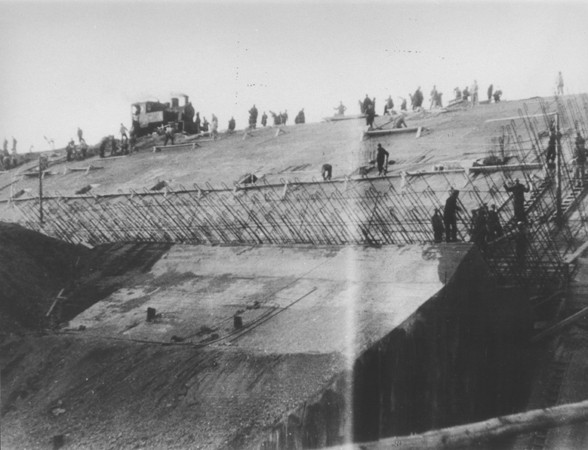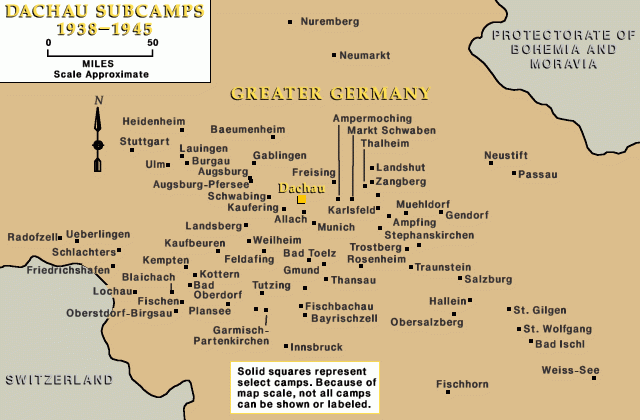
Mühldorf
Between 1933 and 1945, Nazi Germany and its allies established more than 44,000 camps and other incarceration sites (including ghettos). The perpetrators used these locations for a range of purposes, including forced labor, detention of people deemed to be "enemies of the state," and mass murder. Millions of people suffered and died or were killed. Among these sites was Mühldorf.
Establishment of the Camp

As the Allied air offensive against Nazi Germany intensified after 1943, the Nazi leadership decided to construct underground installations in order to produce weaponry and related war materiel. The accelerated construction of these facilities required significant use of forced labor. The SS provided concentration camp prisoners to carry out the most dangerous tasks. These tasks included hollowing out tunnels from mountainsides and caves, constructing underground factories, and hauling construction materials. To facilitate these immense projects, the SS set up hundreds of satellite camps close to proposed industrial sites in 1944 and 1945.
In mid-1944, the SS established the Mühldorf camp complex in Bavaria as a satellite system of the Dachau concentration camp to provide labor for an underground installation for the production of the Messerschmitt 262 (Me-262), a jet fighter designed to challenge Allied air superiority over Germany.

Between July 1944 and April 1945, when the US Army overran the area, more than 8,000 prisoners had been deported to the main camp at Mettenheim and to its subcamps.
Prisoners in the Camp
According to the account of a prisoner who turned over the camp's administrative files to American authorities, the Mettenheim camp held some 2,000 inmates, a nearby women's camp 500 persons, the “forest camps” (Waldlager) about 2,250 male and female inmates, while two other camps held a total of 550 persons. Most of the prisoners were Hungarian Jews, but there were also Jews from Greece, France, Italy as well as political prisoners from Russia, Poland, Germany, and Serbia. The surrounding area also contained numerous forced-labor and prisoner-of-war camps to supply workers for the factory.
Conditions
Conditions at the Mühldorf complex were dismal. As at the Kaufering camps, the SS guards carried out “selections” at the Mühldorf complex in the fall of 1944, deporting hundreds of sick and disabled inmates to the gas chambers at Auschwitz. It is estimated that more than half of the prisoners held there perished following their deportation to the Auschwitz-Birkenau killing center or died on site from overwork, abuse, shootings, and disease. Prisoners in the “forest camps V and VI” (Waldlager V and VI), located near the town of Ampfing, were housed in earthen huts, barracks partially submerged in the ground with soil-covered roofs designed to camouflage the structures from Allied aerial reconnaissance. Prisoners frequently worked 10 to 12 hour days hauling heavy bags of cement and carrying out other arduous construction tasks.
In late April, as the US Army approached the camps, the SS guards forcibly evacuated some 3,600 prisoners from the camp on death marches.
Critical Thinking Questions
- To what degree was the local population aware of this camp, its purpose, and the conditions within? How would you begin to research this question?
- Did the outside world have any knowledge about these camps? If so, what, if any, actions were taken by other governments and their officials?
- What choices do countries have to prevent, mediate, or end the mistreatment of imprisoned civilians in other nations?
- How does the example of this camp demonstrate the complexity and the systematic nature of the German efforts to abuse and kill the Jews?

